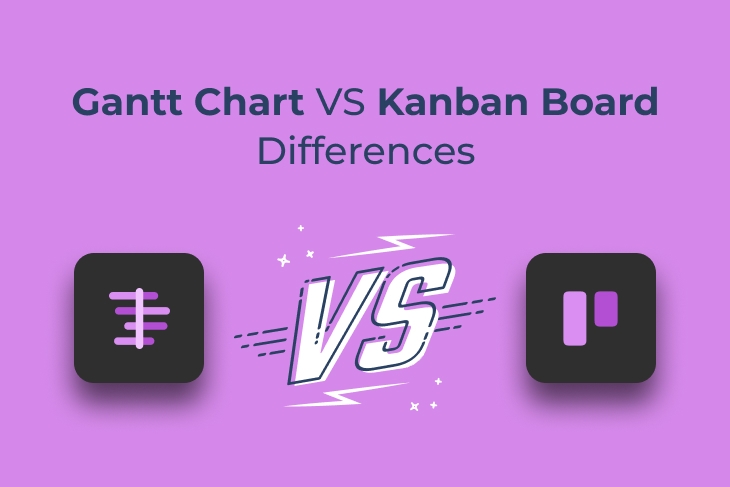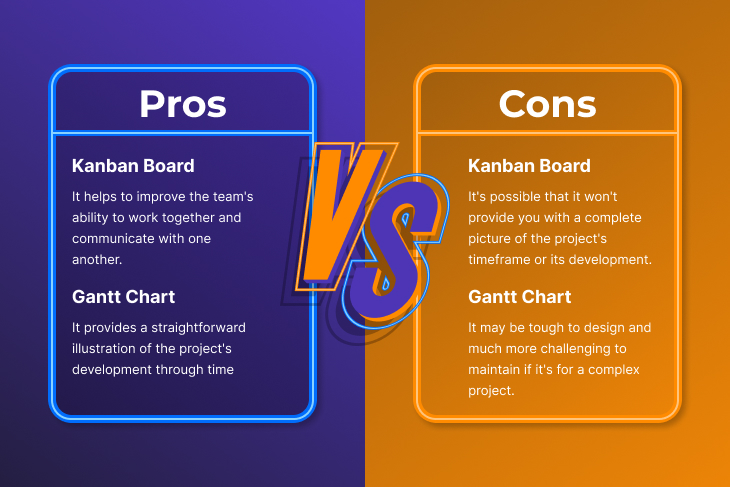Gantt chart vs Kanban: Introduction
A Gantt Chart is a sort of bar chart that is used to graphically depict the tasks and timeframes associated with a project. It was initially presented in the market by Henry Gantt in the 1900s. The chart provides not only the beginning and ending times of each activity but also the total amount of time spent on each activity. Furthermore, it shows the interconnections that exist between the jobs, which is helpful in figuring out the most important way for a project. While planning a project, project leaders often turn to Gantt Charts for assistance in scheduling the project timeframe and identifying possible problems related to resources. Additionally, they can be utilized throughout the project’s execution stage to keep tabs on things like task completion and overall development.
On the other hand, Kanban boards are for providing a visual representation of the progress of the work. It was initially presented to the public by Toyota in the 1940s. Presently, it has grown in popularity as a tool for managing projects under Agile and Lean processes. The board is laid up with columns that stand for the many phases of a project execution process. Tasks of a project are denoted as cards which can be moved from one status to another. Each card has details regarding the task written on it, such as the urgency of the task, when it is due, and who is the assignee for it. By restricting the number of activities that are currently being worked on, teams can concentrate on finishing existing tasks before beginning to work on new ones. This helps to cut down on wait times and improves overall efficiency.
Gantt chart vs Kanban: Differences

When we discuss the Gantt chart vs Kanban based on popularity, both are significantly popular but, there are also some distinctions. Thus let’s compare them and see some major differences.
- Firstly, a Gantt chart is mainly concerned with scheduling and timeframes, whereas, a Kanban board is concerned with the flow of work and the visualization of progress. Kanban boards make it simple to identify which activities are now being performed, which are waiting to be started, and which have been finished but, Gantt charts emphasize time and regularity more than other options.
- When we talk about the Gantt chart vs kanban on planning, Gantt charts are used to construct a precise calendar of activities and deadlines. On the other hand, Kanban boards are just to manage current work and monitor its progress.
- Kanban boards are for continuous processes or repetitive operations and Gantt charts are used based on long or short project timeframes.
- Kanban boards are much more scalable than Gantt charts because they let changes be implemented rapidly and with little effort.
- Kanban boards are accessible to all team members which makes them an ideal tool for promoting teamwork and communication. In most cases, only the individuals in charge of a project, such as a project leader, would utilize a Gantt chart to monitor the project.
Gantt chart vs Kanban: Pros and Cons

Let’s move further into the advantages and disadvantages of the Gantt chart vs Kanban.
- Pros of Kanban Board: It provides columnar visualization of the project’s progress for managing workflow and tasks. It can be readily modified to fulfill the requirements of the group and the project at hand. Furthermore, it helps to improve the team’s ability to work together and communicate with one another. Lastly, it enables the ongoing enhancement and optimization of work processes.
- Pros of Gantt Chart: It provides a straightforward illustration of the project’s development through time. Furthermore, it can help figure out what’s causing work to take so long. It enables the distribution of resources and the balancing of workloads. Lastly, it is helpful for both planning and making predictions.
- Cons of Kanban Board: It’s possible that it won’t provide you with a complete picture of the project’s timeframe or its development. Furthermore, it’s possible that tracking project goals and due dates may require extra tools. Additionally, it is less suited to projects that need precise allocation of resources or a balance of workloads.
- Cons of Gantt Chart: It may be tough to design and much more challenging to maintain if it’s for a complex project. In case, any schedule has to be altered, it can be inflexible. Thus, this approach isn’t the best fit for projects that have a high degree of need for regular adjustments.
Conclusion
As mentioned above, both methods are popular and useful. Thus, you can choose one that you are comfortable with and skilled to work in. Using project management tools such as Alian hub that consists of Kanban view can help you deliver high-calibre work with ease. Project managers get the benefit of workload management, time tracking, milestone management and team collaboration.

